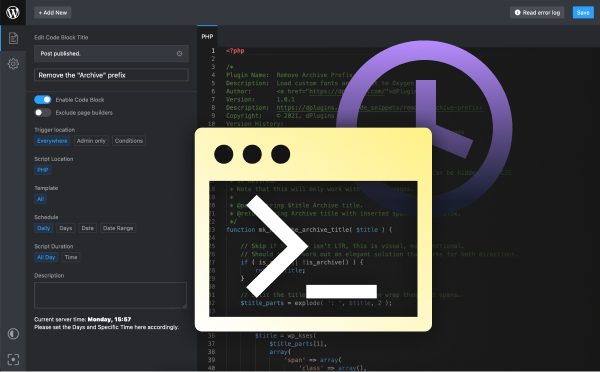Gutenberg Editor is a new block-based WordPress editor that is built into the WordPress core. It allows users to easily create beautiful and complex layouts for their posts and pages. However, some users may not want to use the default Gutenberg Editor styles, and instead want to customize their posts and pages with their own custom CSS. In this tutorial, we will show you how to exclude CSS from the Gutenberg Editor so that you can use your own custom CSS styles.
How to Use the Core Block Editor to Exclude CSS from Gutenberg.
Gutenberg, the core block editor for WordPress, can be a powerful asset for creating custom websites. But it also has its drawbacks – it can add a lot of extra CSS to your pages, making them slower to load and less SEO-friendly. Fortunately, there’s an easy way to exclude CSS from Gutenberg. Here’s how to do it:
1. Install the Gutenberg Exclude CSS plugin. This plugin allows you to easily select which blocks and stylesheets Gutenberg should use on your site.
2. Select the blocks and stylesheets you don’t want to include. Gutenberg Exclude CSS offers you the ability to select which blocks and stylesheets should be excluded from your site. This allows you to keep your pages clean and efficient.
3. Enjoy the benefits of a faster, more SEO-friendly website. With the Gutenberg Exclude CSS plugin, you can now enjoy the benefits of a faster, more SEO-friendly website. Your pages will load faster and rank better in search engine results. Plus, you’ll have more control over the look and feel of your site.
Gutenberg is an incredibly powerful tool for creating custom websites. And with the Gutenberg Exclude CSS plugin, you can make the most of what it has to offer. With a few clicks, you can quickly and easily exclude CSS from Gutenberg, allowing you to create a faster, more SEO-friendly website. So what are you waiting for? Try it out today!
An Introduction to the ‘Additional CSS’ Feature in Gutenberg.
Are you a WordPress user looking to add your own personalized flair to your website? If so, you’re in luck! Gutenberg, the WordPress editor, now offers an ‘Additional CSS’ feature that allows you to customize your website to your exact specifications. With this feature, you can make all kinds of adjustments to the design of your website, from changing the font and color of text to altering the background and size of images. You can even use it to create custom animation effects, giving your website a truly unique look and feel. The possibilities are endless, and the Additional CSS feature makes it easy to customize your site without having to learn any complicated code or hire a professional web designer. All you need to do is enter the code for your chosen changes into the Additional CSS box, and voila! Your website will look exactly how you want it to. So if you’re looking for a quick and easy way to make your mark on the web, look no further than the Additional CSS feature in Gutenberg. Unleash your creativity and make your website stand out from the crowd. It’s never been easier!
Leveraging the Gutenberg Editor to Exclude Unwanted CSS.
The Gutenberg Editor is an incredibly powerful tool for WordPress users. With it, you can easily create stunning, engaging, and highly customized content that stands out from the crowd. But what if you don’t want to include all of the extra CSS that often comes with a Gutenberg-powered website? The good news is that the Gutenberg Editor allows you to easily exclude unwanted CSS. This means you can create a website that looks exactly the way you want it to without cluttering it up with unnecessary code. It’s easy to do. All you have to do is go to the “Post” tab in the WordPress dashboard and click on the “CSS” tab. Here, you’ll find all of the CSS that’s currently included in your website. Simply uncheck the boxes next to any of the CSS you don’t want to be included in your site. Once you’ve done that, you’ll be able to create a website that looks exactly the way you want it to. You’ll have complete control over the look and feel of your website, without having to worry about extra, unwanted code. The Gutenberg Editor is an amazing tool that makes creating content easy. With it, you can easily exclude unwanted CSS and create a website that looks exactly the way you want it to. So don’t be afraid to take control of your website’s design. Leverage the power of the Gutenberg Editor to make your website look exactly the way you want it to.
How to Use the Gutenberg Editor to Disable Specific CSS Elements.
Are you looking to take control of your WordPress website? If so, the Gutenberg Editor can be a powerful way to disable specific CSS elements. CSS stands for Cascading Style Sheets and is the language used to describe how a website looks and behaves. By disabling specific CSS elements, you can customize the look and feel of your website without having to write any code. To get started, you’ll need to install the Gutenberg Editor plugin. This plugin is available for free on the WordPress.org repository. Once you have it installed and activated, you can begin making changes to the CSS elements. First, open the Gutenberg Editor and select the element you want to disable. The editor will show you the source code for that element, which you can then modify. To disable a specific element, simply delete the code associated with it. Once you do that, the element will no longer appear on your website. Now, if you want to make changes to a particular element, you can do so by adding a new line of code. For example, if you wanted to change the font size of a specific element, you could add a line of code stating the desired font size. Finally, once you’re done making changes, you can save your work and view the new version of your website. With the Gutenberg Editor, you can now customize your website and make it look just the way you want. Using the Gutenberg Editor can be a great way to take control of your website and customize its look and feel. With just a few clicks, you can disable specific CSS elements and make changes to existing elements. With the power of the Gutenberg Editor, you can make your website truly unique and one-of-a-kind.
Tips for Excluding Unwanted CSS from Gutenberg Blocks.
1. Create a separate stylesheet for your Gutenberg blocks. This will make it easier to control what CSS is applied to your blocks and make sure that any unwanted styles are not included.
2. Break down your blocks into smaller components. This will help you better manage the CSS and keep it from becoming too large and unwieldy.
3. Use classes to target specific blocks. This will help you isolate the styling for each block and prevent unwanted styles from being applied.
4. Use a preprocessor like Sass to organize your code. Sass can make it easier to keep your code organized and prevent unwanted styles from being included in the output.
5. Test your code in multiple browsers. This will help you make sure that any unwanted styles are not being applied to your blocks in different browsers.
6. Use a linter to check your code. This will help you catch any errors or typos that may lead to unwanted styles being included in your code.
7. Take advantage of the Inspector tool in Gutenberg. This tool can be used to inspect each block and make sure that any unwanted styles are not included.
By following these tips, you can ensure that your Gutenberg blocks are free of unwanted CSS and that your code is more organized and efficient.
How to Use the Block Editor to Remove Unnecessary CSS from Your Gutenberg Pages.
Using the block editor in WordPress to remove unnecessary CSS from your Gutenberg pages is an essential step in streamlining your website. By taking the time to identify and eliminate unwanted code, you can make sure your website is running as efficiently and quickly as possible. Here are some tips to help you remove unnecessary CSS from your Gutenberg pages:
1. Check Your Theme. The first step in removing unnecessary code is to check your theme. Many themes come with their own CSS code that can add unnecessary bloat to your website. To check your theme’s code, go to the Appearance section of your WordPress dashboard and click “Editor.” Once there, you can review the code and make sure that there is no unnecessary CSS included.
2. Inspect Your Blocks. Once you’ve reviewed your theme’s code, you can move on to inspecting the blocks you’ve added to your page. To do this, first select the block you’d like to inspect, then click the “Inspect” button in the upper right corner of the block editor. From there, you can review the code associated with the block and identify any unnecessary CSS that may be included.
3. Delete Unused Styles. Once you’ve identified any unnecessary CSS, you can delete it. To do this, go to the “Appearance” section of your WordPress dashboard and click the “Additional CSS” tab. Here, you can delete any code that you don’t need.
By taking the time to identify and delete any unnecessary CSS, you can make sure your website is running as efficiently and quickly as possible. This can make a big difference in the overall performance of your website and can help ensure that your visitors have a great experience. So take the time to clean up your code and you’ll be glad you did!
How to Exclude Custom CSS from Gutenberg Blocks.
Want to exclude custom CSS from Gutenberg blocks? You can do it easily – just follow these simple steps!
1. Create a folder in your theme and name it “gutenberg-blocks”.
2. Add a css file and name it “gutenberg-blocks.css”.
3. Add the following code to your “functions.php” file:
// Exclude custom CSS from Gutenberg blocks
function exclude_gutenberg_css() {
wp_dequeue_style(‘wp-block-library’);
wp_deregister_style(‘wp-block-library’);
wp_enqueue_style(‘gutenberg-blocks’, get_stylesheet_directory_uri().’/gutenberg-blocks/gutenberg-blocks.css’);
}
add_action(‘wp_enqueue_scripts’, ‘exclude_gutenberg_css’, 100);
4. Now, all the custom CSS you write in “gutenberg-blocks.css” will be excluded from Gutenberg blocks.
By following these simple steps, you can easily exclude custom CSS from Gutenberg blocks and make sure that your site looks exactly the way you want it to. So go ahead, give it a try and customize your site to perfection!
A Guide to Excluding Unwanted CSS from Gutenberg-Built Pages.
As website builders, we all know that the last thing we want is for our pages to be weighed down with unnecessary codes and styles. As much as we want our pages to look beautiful, no one wants their site to be bogged down with useless clutter.
Luckily, if you’re using Gutenberg to build your pages, you don’t have to worry about unwanted CSS slowing down your site. The good news is that there are ways to keep your pages clean and fast. Here’s a guide to excluding unwanted CSS from Gutenberg-built pages.
1. Use the Block Editor
Gutenberg enables you to create stunning pages with minimal effort, but it also allows you to take control over the amount of CSS your page uses. To get started, open the Block Editor and select the page you want to edit. From here, you can choose which blocks you want to keep and which ones you want to delete. Simply click on the block and select “Delete Block” to remove it from your page.
2. Check the Block Settings
Each block contains its own set of settings that you can customize to make sure your page looks exactly how you want it to. After selecting the block, click on the “Settings” button in the top right corner of the block. From here, you can scroll through the options and uncheck any CSS code that you don’t want included on your page.
3. Use WordPress Plugins
If you want an even easier way to manage the amount of CSS on your page, you can try using a WordPress plugin. Plugins like Asset CleanUp and Autoptimize can help you remove any unnecessary CSS from your page. All you have to do is install the plugin and then configure it to exclude the CSS you don’t need.
4. Use a Custom CSS Plugin
If you want to add your own custom CSS to your page, you can use a plugin like Simple Custom CSS. This plugin allows you to write your own custom CSS and apply it to any page or post. This is a great way to make sure your page looks exactly how you want it while keeping the amount of CSS to a minimum.
By following these steps, you can easily exclude any unnecessary CSS from Gutenberg-built pages. This will help your pages load faster, save bandwidth, and improve your site’s overall performance. So, what are you waiting for? Get started today and make sure your pages are running as smoothly and efficiently as possible!
In conclusion, excluding CSS from the Gutenberg Editor is a simple process that can be done by adding a line of code to the theme’s functions.php file. This process helps to reduce the amount of code that is loaded on each page and can help to improve the overall performance of the website. Using this method to exclude CSS from the Gutenberg Editor also prevents conflicts with any other plugins that may be using the same CSS.


